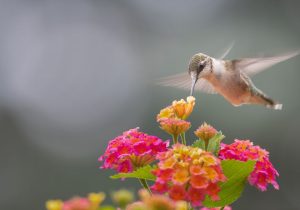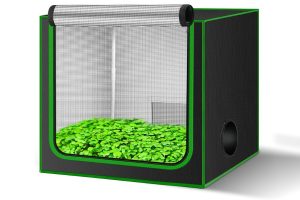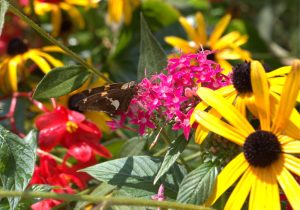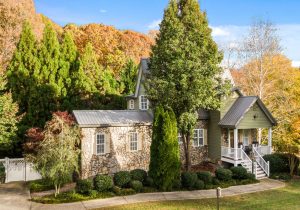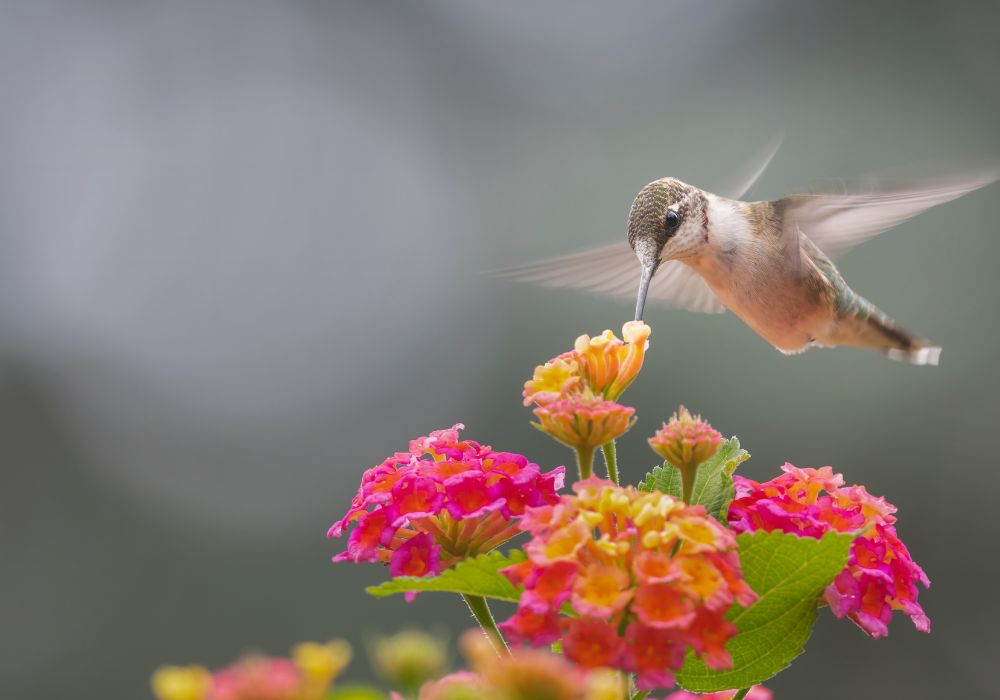
Among the most beautiful animals in nature are hummingbirds. Any garden would benefit from their fast wing beats and ability to hover in mid-air. Choosing the correct flowers will help you to invite these little guests to your outdoor area. Apart from their attraction to vivid colors, hummingbirds depend on particular flowers for the nectar that sustains their active way of life.
This guide will enable you to select the ideal flowers to attract hummingbirds, so transforming your garden into a vivid and energetic refuge for these lovely creatures.
Understanding Hummingbird Attraction
Contents
Hummingbirds have unique characteristics that influence the types of flowers they visit. They’re not only attracted to vibrant colors but also seek out high-nectar blooms that can sustain their energy-intensive lifestyle. To create a garden that brings these enchanting birds to your space, it’s important to understand what makes flowers attractive to hummingbirds.
Why Hummingbirds are Drawn to Certain Flowers
Hummingbirds rely on nectar for their high metabolism, and they are highly selective about the flowers they visit. The best flowers to attract hummingbirds are those with high nectar content, making them an ideal energy source. They prefer tubular-shaped flowers, which fit their long, thin beaks, allowing them to feed efficiently.
The Role of Nectar in Hummingbird Habitats
Hummingbird survival depends on nectar-rich blossoms, particularly during migration and breeding seasons when their energy needs are highest. Planting flowers that draw hummingbirds will help establish a necessary feeding ground. Excellent high-nectar plants that can meet dietary demands are trumpet vine and bee balm.
Colors and Shapes That Appeal to Hummingbirds
Because these vivid colors contrast with their green surroundings, bright red, orange, and pink flowers are most likely to draw hummingbirds. Convenience and a concentrated nectar supply abound when hummingbirds can feed easily from flowers with tubular forms. Remember that hummingbirds find great appeal in flowers chosen for your garden mostly depending on color and shape.
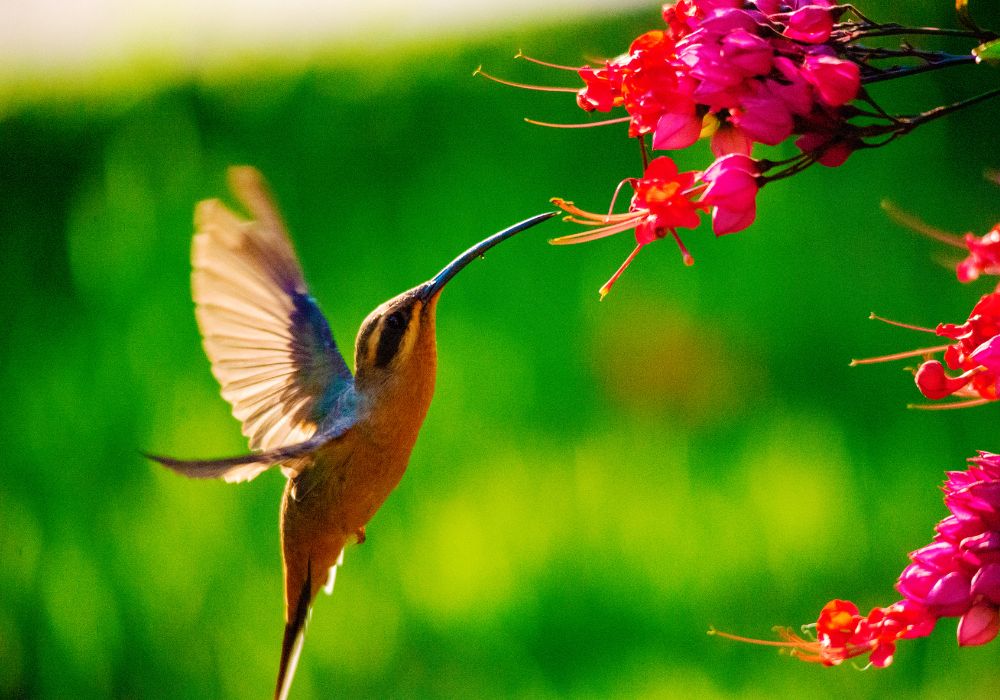
Top Flowers to Attract Hummingbirds
Choosing the right flowers to attract hummingbirds can transform your garden into a vibrant oasis filled with the lively movement of these tiny birds. Hummingbirds are attracted to a variety of blooms, particularly those rich in nectar and bright in color. Whether you’re planting annuals, perennials, or even shrubs, incorporating specific flowers into your landscape is key to keeping these visitors coming back. Below, we explore some of the best flowers to attract hummingbirds and how to make the most of your garden for them.
Red and Bright-Colored Flowers
Particularly red, hummingbirds find great attraction in vivid colors. One of the primary causes red flowers are commonly found in hummingbird-friendly gardens is For that, the rich color serves as a lighthouse pointing to the presence of nectar-rich blossoms. Among the most successful flowers to attract hummingbirds are petunias, trumpet vine, red salvia, and scarlet sage. Although red is the most striking color, hummingbirds can also be drawn in orange, pink, and purple flowers by their visibility and nectar content.
Plant red and brilliant-colored flowers in your garden so hummingbirds can readily find and visit areas where they are scattered. Combining several kinds of red and vivid blooms will attract hummingbirds and provide your surroundings with great visual appeal.

Tubular-Shaped Blooms Ideal for Hummingbird Feeding
Attracting hummingbirds depends on a flower’s form as much as its color. Their long, thin beaks, meant to reach deep into flowers to extract nectar, fit tubular-shaped flowers especially. This structure helps hummingbirds to conserve energy and feed more easily. Classic tubular-shaped flowers to attract hummingbirds include honeysuckles, coral bells, and foxgloves.
Planting in containers, hanging baskets, or along garden borders, these tubular blossoms to draw hummingbirds are also perfect. Including them in several areas raises the possibility of drawing more hummingbirds as they fly between blossoms. Remember that keeping a range of tubular flowers will give them several feeding choices, hence your garden will be irresistible.
Native vs. Non-Native Plants for Hummingbirds
Choosing native flowers to attract hummingbirds is one of the most sustainable and effective ways to encourage their visits. Native plants are well-adapted to the local climate and often require less water and maintenance, making them a great addition to your garden. Native plants like columbine, bee balm, and cardinal flowers are particularly attractive to hummingbirds, providing both food and habitat in a natural setting.
Non-native flowers can also attract hummingbirds, but they may not offer the same long-term benefits. While species like petunias or lantanas are often used in gardens for their aesthetic appeal and nectar, native flowers offer better support for local ecosystems. A mix of native and non-native plants can give you the best of both worlds, ensuring a diverse garden that attracts hummingbirds while maintaining beauty.
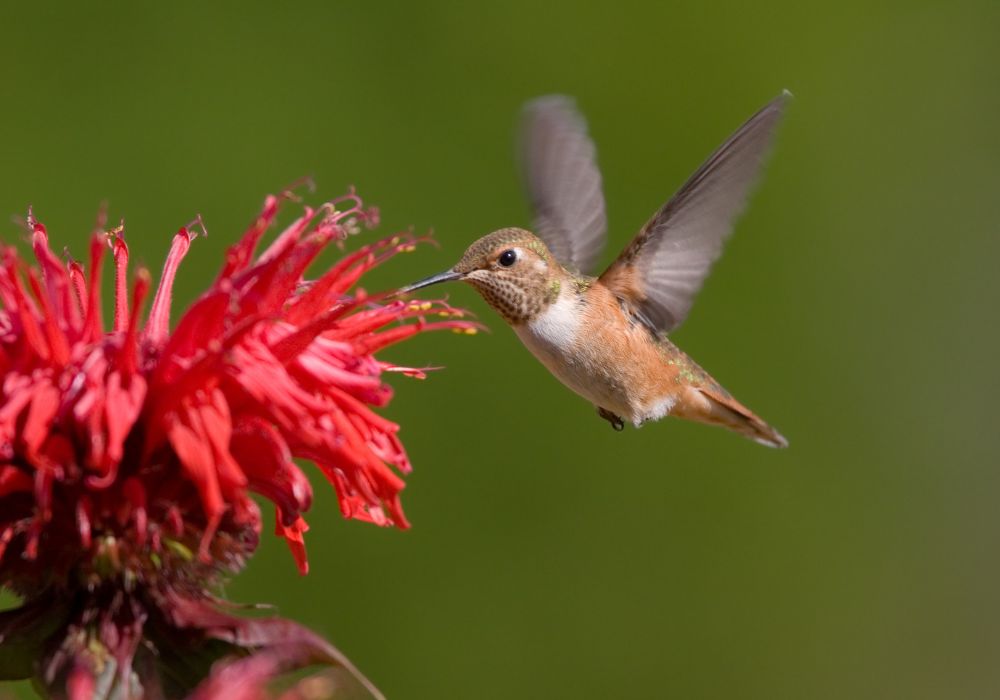
Best Annual Flowers for Hummingbirds
Annual flowers are a great choice if you want quick and colorful additions to your garden that attract hummingbirds. Annuals bloom profusely and provide ample nectar, making them irresistible to these tiny birds. Some of the best annual flowers to attract hummingbirds include:
- Salvia (Scarlet Sage): This bright red flower is a magnet for hummingbirds, with its tubular shape and abundant nectar. It’s also easy to grow and requires minimal maintenance.
- Petunias: Available in various vibrant colors, petunias are a versatile annual flower that hummingbirds love. They work well in containers, hanging baskets, and flower beds.
- Zinnias: These vibrant blooms come in various colors and provide a steady source of nectar throughout the growing season, making them a favorite for hummingbirds.
Planting various annuals can provide ongoing nectar sources from early spring until late fall, ensuring that your garden remains a hummingbird hotspot.
Best Perennial Flowers for Hummingbirds
The foundation of a hummingbird-friendly garden is perennial flowers, which provide dependable, consistent year-round bloomings. Every season these blossoms return, giving hummingbirds a known nectar source. Among the best perennial flowers to attract hummingbirds are:
![Hummingbird Feeder 10 oz [Set of 2] Plastic Feeders for Outdoors](https://gardens.theownerbuildernetwork.co/files/2024/10/Hummingbird-Feeder-10-oz-Set-of-2-Plastic-Feeders-for-Outdoors.jpg)
- Bee Balm: A perennial favourite for hummingbirds and gardeners, bee balm is well-known for its arresting red, pink, and purple blooms. Because of its great nectar concentration, any hummingbird garden should have this must-have.
- Trumpet Vine: Perfect for hummingbirds to eat from, this vine generates trumpet-shaped blossoms as their name implies. Additionally fast growing and able to cover walls or trellises is this plant.
- Columbine: Hummingbirds love the delicate and lovely Columbine flower. Its unusual bloom form lends grace to any garden and makes feeding simple.
Combining these perennial blossoms provides hummingbird food that is consistent and will keep them returning year after year.
Choosing the correct flowers to attract hummingbirds will help to produce a vivid and energetic garden. By concentrating on vivid, nectar-rich blooms in colors of red, orange, and pink and including tubular-shaped flowers, you can create a hummingbird paradise in your garden. Combining annuals, perennials, even native plants will not only provide food but also create a friendly habitat where these little birds will flourish. Choosing the best flowers to draw hummingbirds guarantees that your garden turns into a vibrant, lovely place alive.
Tips for Growing and Maintaining Flowers to Attract Hummingbirds
Proper care and maintenance of the flowers to attract hummingbirds are essential to ensure that your garden remains a reliable source of food. Whether you’re growing annuals or perennials, following these tips will keep your blooms healthy and hummingbird-friendly throughout the growing season.
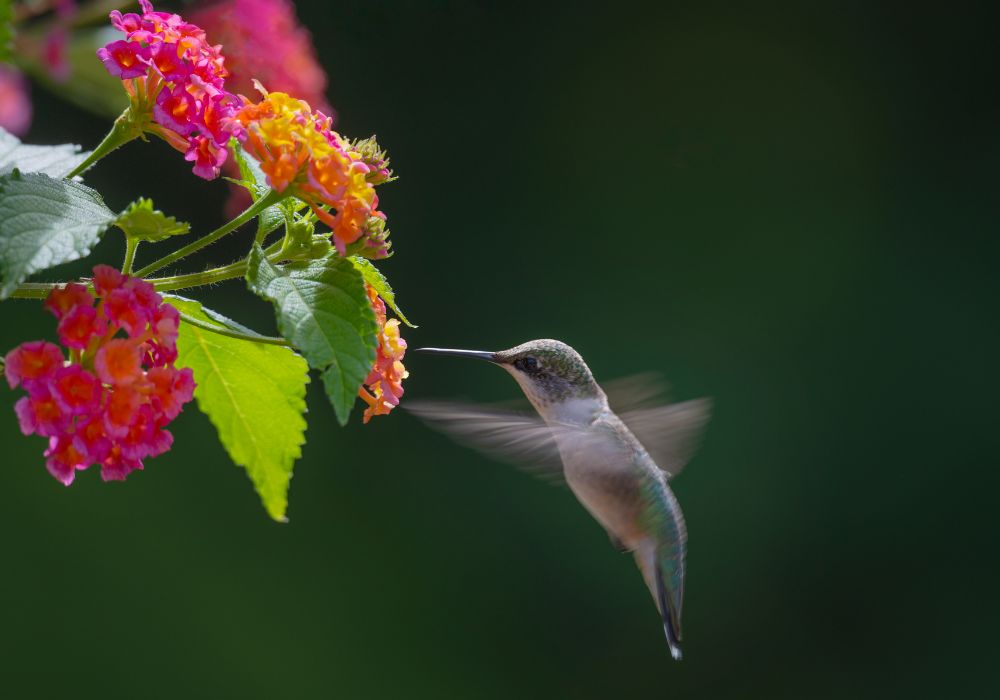
Watering and Feeding
Consistent watering is essential to keep your flowers thriving and producing nectar, especially for those specifically planted to attract hummingbirds. While some native species are more tolerant of dry conditions, most annuals and perennials that draw hummingbirds require regular and deep watering.
Flowers like bee balm, trumpet vine, and columbine, which are highly attractive to hummingbirds, benefit greatly from deep watering, as it encourages robust root growth. Strong roots lead to healthier plants that can produce more abundant blooms, ensuring a steady supply of nectar for hummingbirds.
Deep watering is particularly important in hot summer months when evaporation is high. A thorough soaking of the soil allows water to reach deeper layers, promoting long-term moisture retention. This is crucial for flowers to attract hummingbirds, as healthy, well-watered plants are more likely to keep producing nectar-rich blooms throughout the season.
Deadheading and Pruning
Deadheading is a vital gardening practice, especially if you want to keep your flowers blooming for an extended period. It involves the simple but effective process of removing spent or faded blooms from your plants. When a flower begins to wilt, the plant redirects its energy toward producing seeds rather than new flowers.
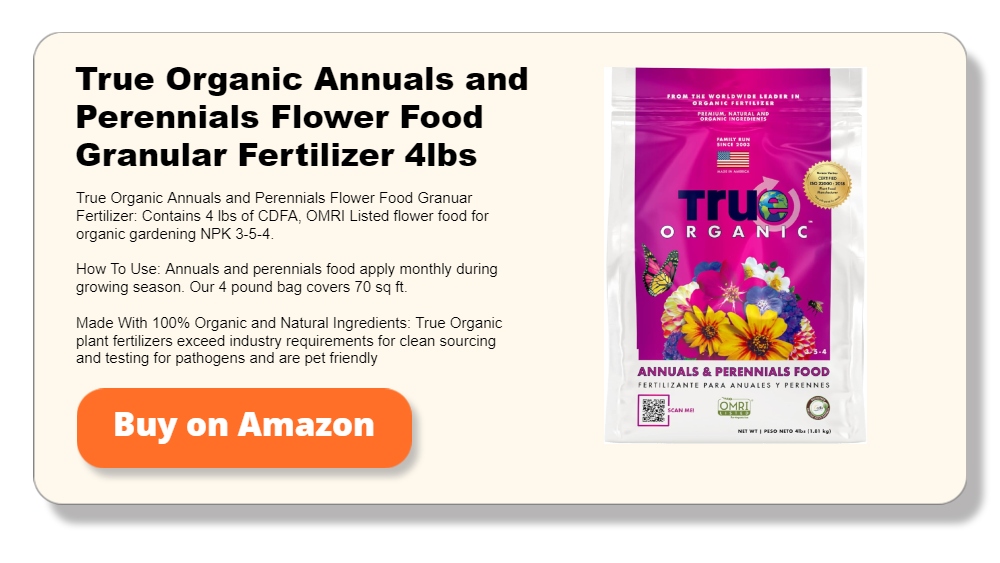
Removing these faded blooms essentially trick the plant into continuing its flowering cycle, prompting it to produce fresh blooms rather than diverting resources to seed production. This practice is particularly beneficial for annuals like zinnias and salvia, among the best flowers to attract hummingbirds. Keeping these flowers in a continuous bloom cycle ensures that hummingbirds will always have a reliable food source.
Pruning, on the other hand, is just as important for the health and longevity of your plants. Regular pruning involves cutting back overgrown stems, dead leaves, or damaged branches to maintain the plant’s shape and structure.
Pruning not only keeps your garden looking tidy and well-maintained, but it also improves air circulation around the plant, reducing the chances of diseases like powdery mildew or fungal infections. In addition, pruning encourages more vigorous growth by allowing the plant to focus its energy on producing healthy, nectar-rich flowers.
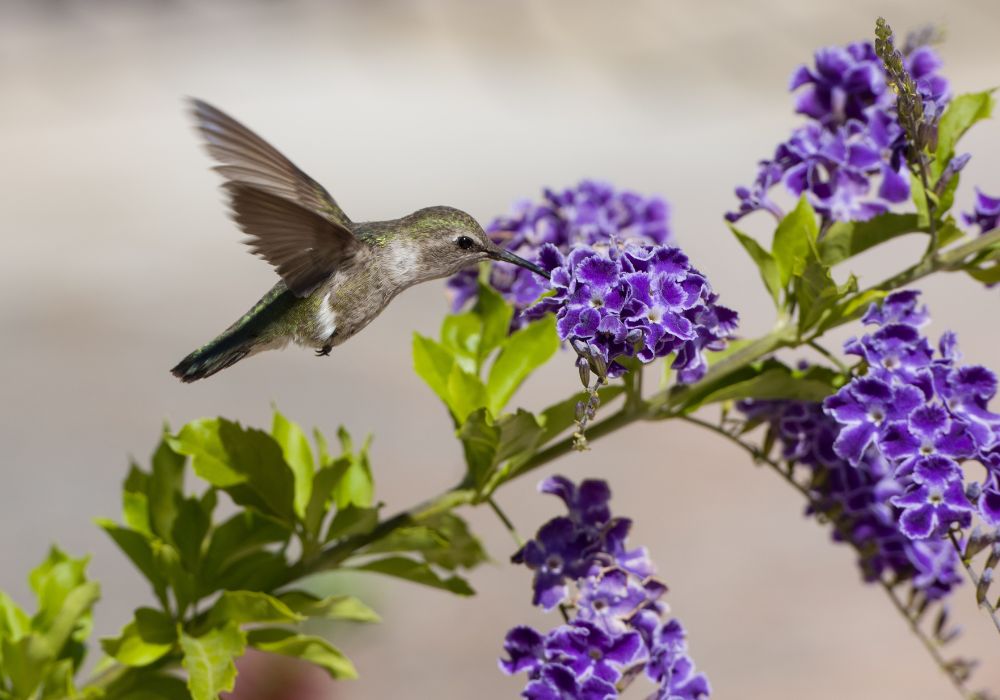
For flowers to attract hummingbirds, pruning is important in keeping them at their best. Hummingbirds rely on abundant nectar sources, and healthy plants are likelier to produce the high-quality nectar they need. Trumpet vine, bee balm, and honeysuckle, for example, benefit from regular pruning to encourage new growth and maximize flower production.
Overgrown or crowded plants can become a breeding ground for pests and diseases, which can reduce the number of blooms and, consequently, the amount of nectar available to hummingbirds. By pruning and deadheading your plants regularly, you help create an ideal environment that looks good and supports hummingbird visits.
Apart from the visual and health advantages, deadheading and pruning directly affect the long-term viability of your garden. Encouragement of ongoing bloom guarantees that your flowers will always be appealing to hummingbirds all during the growing season. Healthy, well-kept flowers that draw hummingbirds are more likely to bloom abundantly, so providing the birds with a consistent supply of nectar. This means more chances for you to appreciate seeing these exquisite animals dart between flowers, sipping nectar from one bloom to the next.
Seasonal Care
In spring, hummingbirds emerge from migration, often arriving hungry and eager to find reliable nectar sources. Early-blooming annuals like petunias and salvia are excellent choices for this time of year. These flowers to attract hummingbirds provide an immediate splash of color and a quick source of nectar that helps fuel the birds after their long journeys.
Since these annuals grow and bloom quickly, they’re perfect for providing a steady food source during the early growing season. Planting in clusters or groupings makes it easier for hummingbirds to spot the flowers and encourages more frequent visits.
As summer approaches, your focus should shift to keeping the flowers to attract hummingbirds going strong. Mid-season perennials like bee balm and columbine are wonderful flowers to attract hummingbirds during the warmer months.
These nectar-rich perennials will continue to bloom through summer, ensuring that your garden remains a hub of activity. Hummingbirds thrive on the abundance of nectar these flowers provide, and because these perennials bloom year after year, they offer a reliable food source that hummingbirds will return to time and again.
When fall arrives, many flowers begin to fade, and it’s essential to have late-blooming varieties that can provide nectar when other plants are winding down. Goldenrod and hardy fuchsia are two top choices for fall blooms that continue to attract hummingbirds well into the cooler months.
These flowers to attract hummingbirds are particularly important as they prepare for migration, offering them one last burst of energy before embarking on their long journey south. Including these late bloomers ensures that your garden remains a critical stop for hummingbirds during the migration season.
It’s not just about spring and summer blooms. Winter can be a critical time to plan for. While many regions may not have hummingbirds year-round, certain areas like the southern United States and warmer climates do. In these regions, having winter-blooming plants such as camellia or grevillea ensures that hummingbirds can access nectar even during colder months. These flowers to attract hummingbirds in the winter can provide vital sustenance for non-migratory species, allowing them to survive when food sources are scarce.

Planning your garden with various flowers blooming across different seasons guarantees you’ll always have flowers to attract hummingbirds. You create a garden that supports hummingbird populations year-round by offering nectar-rich options from early spring through the winter. The continuous availability of nectar benefits the birds and allows you to enjoy the vibrant activity of hummingbirds throughout the year.
Including seasonally appropriate flowers to draw hummingbirds guarantees that your garden stays vibrant, energetic, and inviting whatever the time of year. Whether your starting point is spring annuals like petunias, offering summer blooms with bee balm, or extending the blooming season with goldenrod in the fall, careful seasonal care guarantees a hummingbird garden year after year.
Pest and Disease Control
Creating a consistent nectar source for hummingbirds depends on your flowers’ health. Quickly weakening plants, pests, and diseases limit their capacity to create the vivid, nectar-rich blooms, hummingbirds depend on. But when controlling pests, it’s important to steer clear of chemical pesticides since these might endanger the hummingbirds and contaminate the nectar.
Organic pest control is a better option for many flowers to attract hummingbirds, such as honeysuckle, zinnias, and goldenrod, as many are sensitive to strong chemicals.
Think about natural ways of control rather than pesticides. Organic solutions like neem oil are quite good in controlling aphids or spider mites without damaging the nectar or the flowers.
Neem oil keeps your flowers to attract hummingbirds safe by upsetting the life cycles of pests, stopping them from feeding and breeding. Another great approach to naturally controlling destructive pests is introducing helpful insects like ladybugs or lacewings, enabling your flowers to flourish.
Maintaining healthy flowers to attract hummingbirds also means monitoring disease symptoms. Fungus, powdery mildew, or root rot may compromise the vigor of your blossoms. Pruning diseased sections and enhancing air circulation help to stop the spread of these diseases, ensuring that your flowers remain in the best shape. Strong, disease-free flowers generate more nectar, thus making your garden a hummingbird paradise.
Choosing and keeping the proper flowers will help your garden be a vibrant, friendly place for hummingbirds. Proper maintenance combined with brilliant, tubular-shaped blooms will help you design a garden where hummingbirds will swarm to year after year. If you plant a range of annuals and perennials and give regular care, your garden will remain a vivid, hummingbird-friendly habitat that provides both beauty and sustainability.
Conclusion
Creating a garden filled with flowers to attract hummingbirds brings vibrant life and energy to your outdoor space. Choosing nectar-rich, brightly colored blooms ensures that hummingbirds will visit throughout the seasons. With proper care, your garden can become a haven for these delightful birds year after year.


